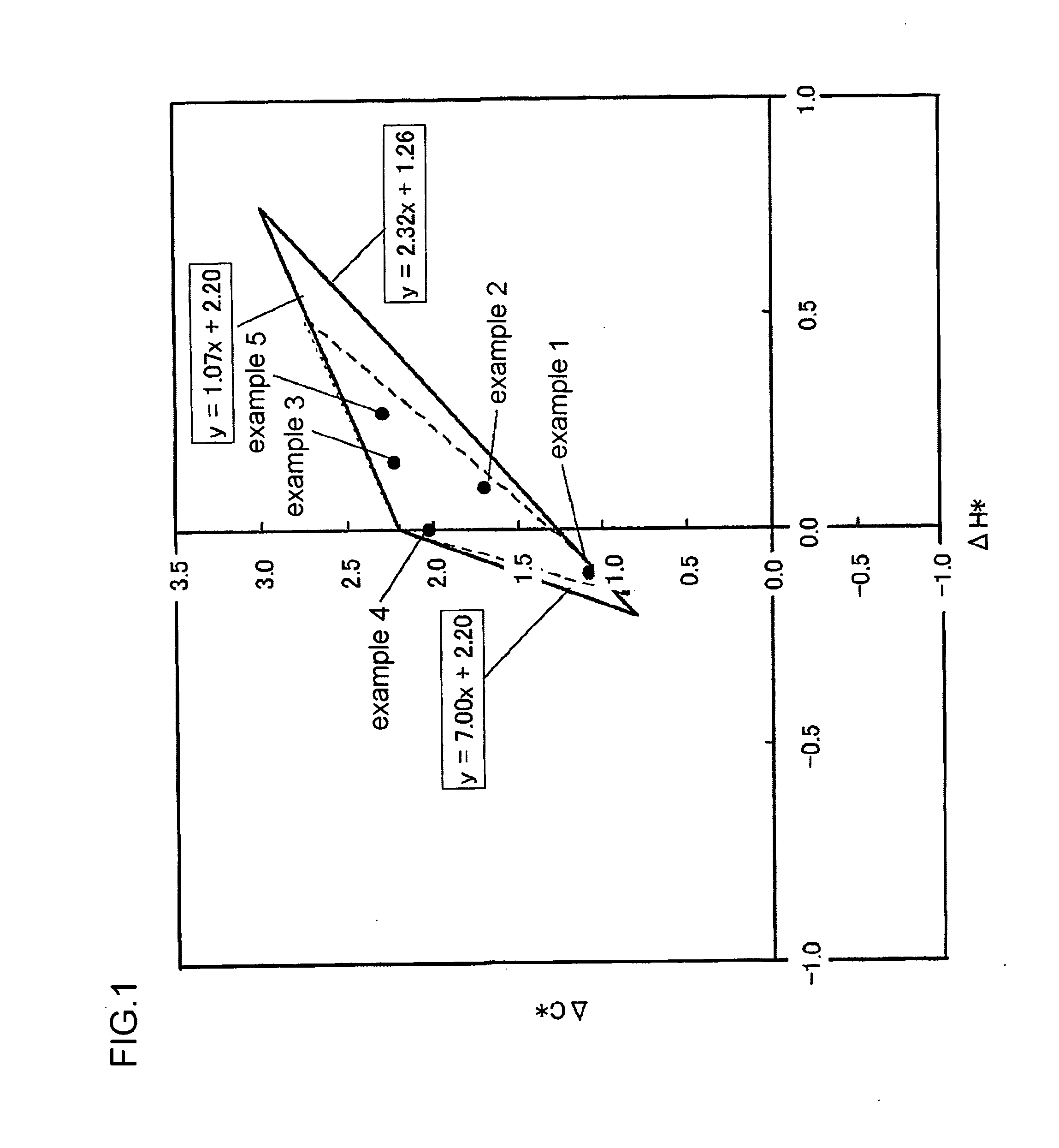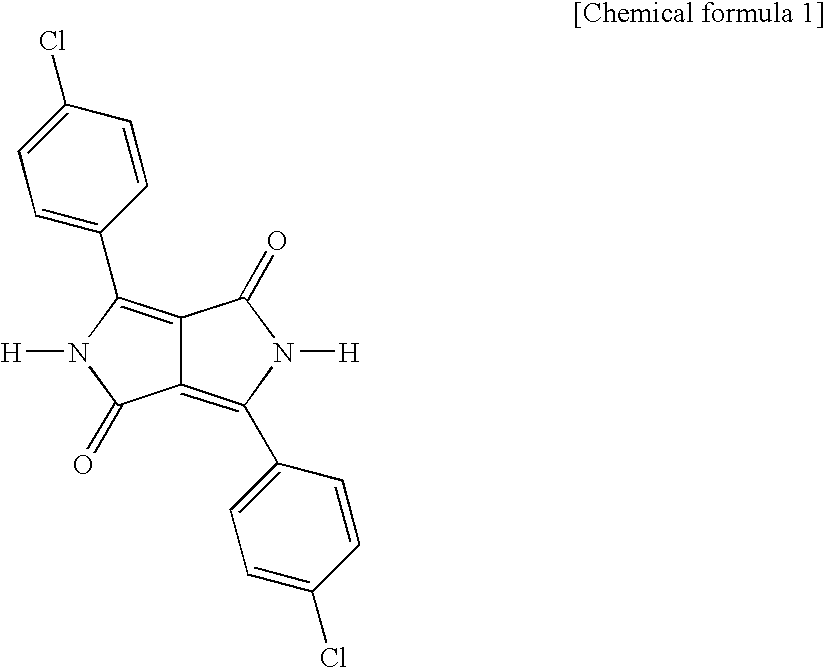High-chroma c.i. pigment red 254 and process for producing the same
a technology of pigment red and chroma, which is applied in the field of c. i can solve the problems of insufficient c. i. pigment red 254, process does not show intrinsic efficiency of pigment, and is difficult to say, and achieves excellent quality, high chroma, and high chroma.
- Summary
- Abstract
- Description
- Claims
- Application Information
AI Technical Summary
Benefits of technology
Problems solved by technology
Method used
Image
Examples
example 1
[0063]Wet cake of crude pigment of 3,6-bis(4-chlorophenyl)-1,4-diketopyrrolo[3,4-C]pyrrole produced with well-known method was prepared. The percentage of water content of the wet cake is 68.4%, it had no drying history and was composed of crude pigment with mean particle diameter of 0.10 μm or more and less than 0.20 μm.
[0064]158.23 parts of wet cake of the crude pigment (50 parts in solid amount conversion, 108.23 parts of moisture) was suspended stirring with 41.77 parts of water in 600 parts of N-methyl-pyrrolidone in separable wide mouth flask of 1 L volume; the temperature was raised to 110° C. in weak alkaline without containing alkali; then stirred at 110° C. for 4 hours. After 4 hours, 8.4 parts of 10 sodium hydroxide was added and made strong alkaline; further heated stirring at 110° C. for 3 hours. Then, it was cooled to 60° C., filtered at the same temperature; then, wet cake was washed with N-methyl-pyrrolidone and water, and was dried; and 45.7 parts of C. I. Pigment R...
example 2
[0065]158.23 parts of wet cake of the same crude pigment as used in example 1 was suspended stirring with 41.77 parts of water and 3.0 parts of aqueous solution of 10% sodium hydroxide in 600 parts of N-methylpyrrolidone in separable wide mouth flask of 1 L volume; the temperature was raised to 110° C. in alkaline containing alkali; then, stirred at 110° C. for 4 hours. After 4 hours, 3.0 parts of 10% sodium hydroxide was added and made strong alkaline, further heated stirring at 110° C. for 3 hours. Then, it was cooled to 60° C., and was filtered at the same temperature; then, wet cake was washed with N-methylpyrrolidone and water, and was dried; and 46.0 parts of C. I. Pigment Red 254 was obtained. The pigment had mean particle diameter in the range of 0.40-0.70 μm.
example 3
[0066]158.23 parts of wet cake (50 parts in solid amount conversion, 108.23 parts of moisture) of the same crude pigment as used in example 1 was suspended stirring with 41.77 parts of water in 600 parts of N-methylpyrrolidone in separable wide mouth flask of 1 L volume; the temperature was raised to 110° C. in weak alkaline without containing alkali; then it was stirred at 110° C. for 4 hours. After 4 hours, 6.0 parts of 10% sodium hydroxide was added and made strong alkaline, and was, further heated stirring at 110° C. for 3 hours. Then, it was cooled to 60° C., filtered at the same temperature; then wet cake was washed with N-methylpyrrolidone and water, and was dried; and 45.7 parts of C. I. Pigment Red 254 was obtained. The pigment had mean particle diameter in the range of 0.40-0.70 μm.
PUM
| Property | Measurement | Unit |
|---|---|---|
| Temperature | aaaaa | aaaaa |
| Fraction | aaaaa | aaaaa |
| Time | aaaaa | aaaaa |
Abstract
Description
Claims
Application Information
 Login to View More
Login to View More - R&D
- Intellectual Property
- Life Sciences
- Materials
- Tech Scout
- Unparalleled Data Quality
- Higher Quality Content
- 60% Fewer Hallucinations
Browse by: Latest US Patents, China's latest patents, Technical Efficacy Thesaurus, Application Domain, Technology Topic, Popular Technical Reports.
© 2025 PatSnap. All rights reserved.Legal|Privacy policy|Modern Slavery Act Transparency Statement|Sitemap|About US| Contact US: help@patsnap.com


